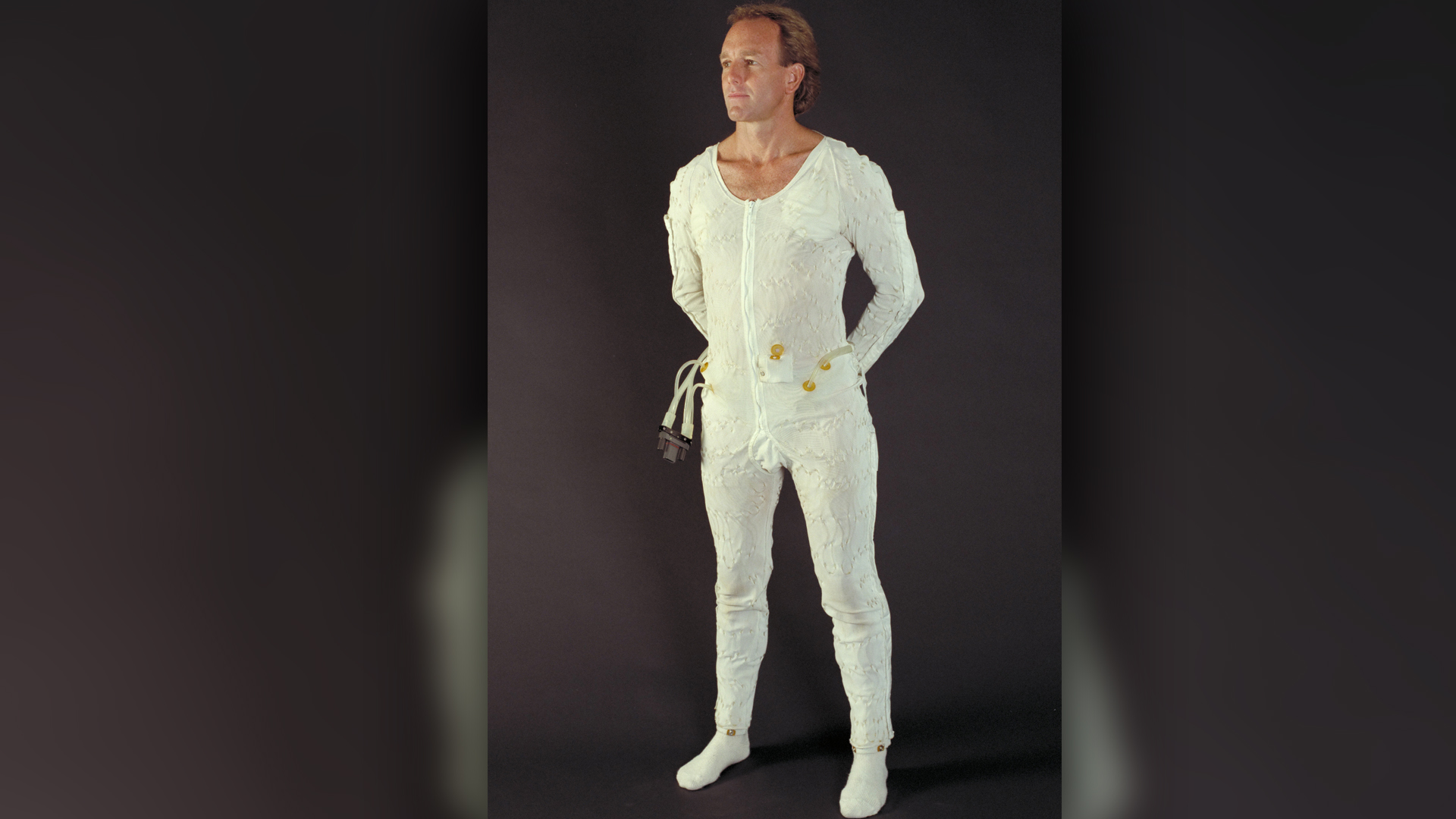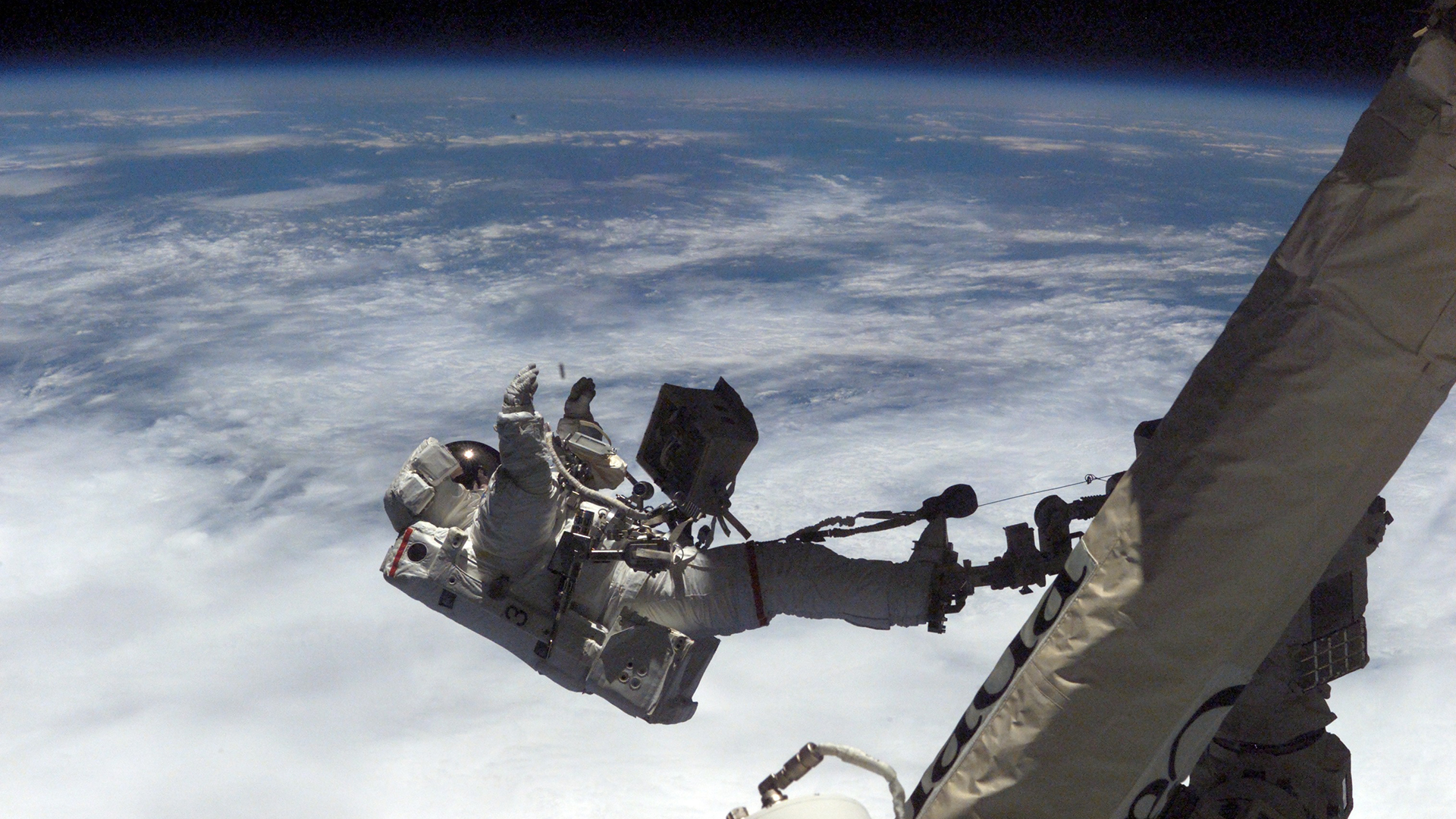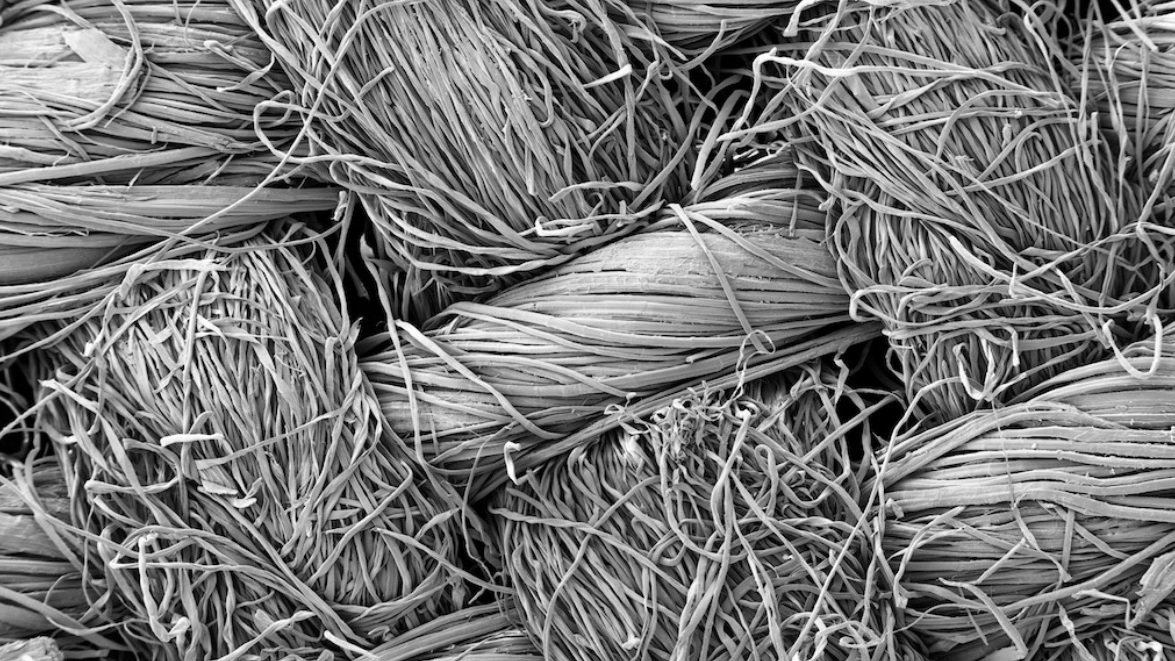Astronauts may finally start cleaning their space underwear (with microbes)
Bacterial compounds could provide antimicrobial protection.

We can probably all agree that sharing your unwashed underwear with another person isn't ideal. However, for astronauts onboard the International Space Station (ISS), performing a spacewalk requires that they share not only the spacesuits, but also a next-to-the-skin piece of clothing that's worn underneath the spacesuit and resembles long underwear, known as the Liquid Cooling and Ventilation Garment (LCVG).
Access to a freshly laundered LCVG isn't an option on the ISS, but technicians with the European Space Agency (ESA) are taking steps to improve the antimicrobial properties in LCVG materials to keep these shared garments clean and fresh for longer, ESA representatives said in a statement.
In a new two-year project called Biocidal Advanced Coating Technology for Reducing Microbial Activity (Bacterma), ESA researchers are collaborating with the Vienna Textile Lab — a private biotechnology company in Austria that produces fabric dyes from bacteria. Compounds generated by these bacteria can also make textile fibers more resistant to certain types of microbes, according to the statement.
Related: 7 everyday things that happen strangely in space
Astronauts on the ISS keep their hands and bodies clean with no-rinse cleaning solutions and dry shampoo, but laundering clothes — including underwear — would require too much water and is simply not possible, according to NASA. Nor is there enough room on the ISS for astronauts to pack a fresh change of clothes for every day of their mission.
When it comes to dirty underwear, astronauts don't have the luxury of being squeamish, and may wear a pair more than once. American astronaut Don Pettit wrote that he changed his underwear once every three or four days when he was on the ISS, according to NASA. And when Japanese astronaut Koichi Wakata tested bacteria-resistant underwear coverings in space in 2009, he wore one pair "for about a month," the San Francisco Times reported.
"Wakata reported no pungent-smelling effects after wearing the fabrics within a scheduled timeline," according to the Times.
Sign up for the Live Science daily newsletter now
Get the world’s most fascinating discoveries delivered straight to your inbox.

When clothing becomes too soiled or smelly for an astronaut to wear any longer, it is either returned to Earth as trash or is packed up into a capsule, which is then ejected into space and burns up in Earth's atmosphere, NASA says.
LCVGs are only worn during spacewalks, but astronauts are working harder than usual when they wear this communal undergarment. An LCVG is very form-fitting, covering the limbs and torso, and it keeps astronauts cool during the extreme physical exertion of working in the vacuum of space (an adult diaper is worn underneath, in case the astronaut needs to relieve themselves during an hours-long spacewalk). Gas ventilation draws moist air away from extremities, while flexible tubes that are sewn into the garment circulate cooling water around the body and help to remove excess heat and maintain a comfortable core body temperature, according to the National Air and Space Museum.
ESA scientists were already investigating candidate materials for upgrading outer spacesuit layers, so this new initiative "is a useful complement, looking into small bacteria-killing molecules that may be useful for all kinds of spaceflight textiles — including spacesuit interiors," ESA material engineer Malgorzata Holynska said in the statement.

"It might sound counterintuitive to get rid of microbes using the products of microbes," Seda Özdemir-Fritz, a Bacterma project scientist with the Austrian Space Forum, said in the statement. "But all kinds of organisms use secondary metabolites to protect themselves from an extreme environmental conditions. The project will examine them as an innovative antimicrobial textile finish."
Scientists will test the performance of antimicrobial properties in the new textiles by exposing them to sweat, lunar dust and radiation, to simulate conditions that could accelerate aging and deterioration of the fabric in space, Holynska added.
Originally published on Live Science.

Mindy Weisberger is an editor at Scholastic and a former Live Science channel editor and senior writer. She has reported on general science, covering climate change, paleontology, biology and space. Mindy studied film at Columbia University; prior to Live Science she produced, wrote and directed media for the American Museum of Natural History in New York City. Her videos about dinosaurs, astrophysics, biodiversity and evolution appear in museums and science centers worldwide, earning awards such as the CINE Golden Eagle and the Communicator Award of Excellence. Her writing has also appeared in Scientific American, The Washington Post and How It Works Magazine. Her book "Rise of the Zombie Bugs: The Surprising Science of Parasitic Mind Control" will be published in spring 2025 by Johns Hopkins University Press.









